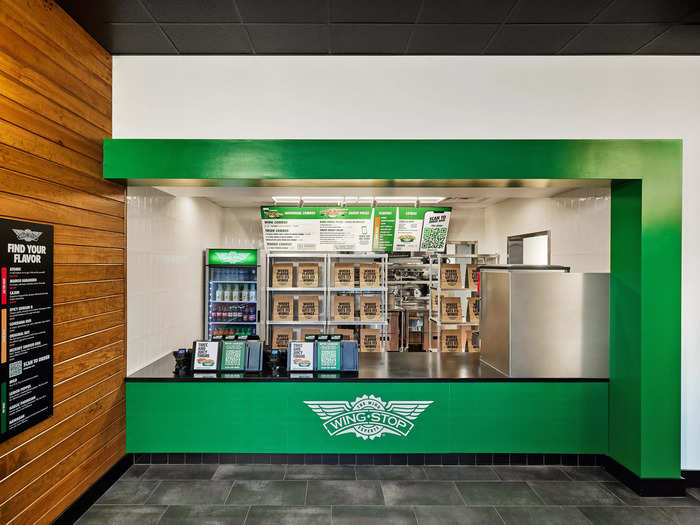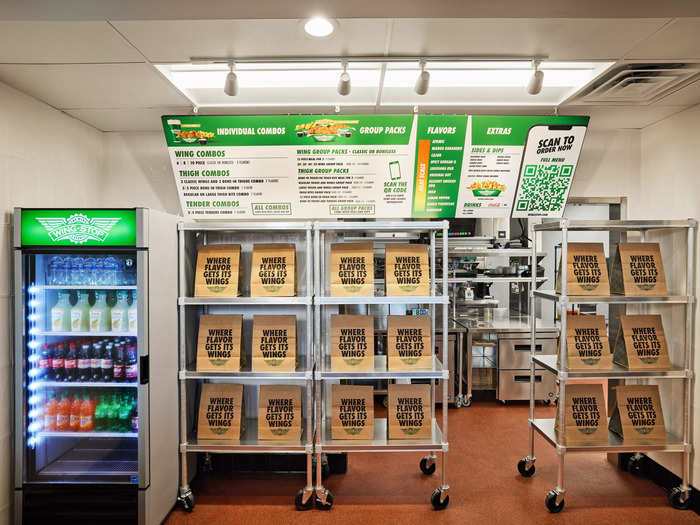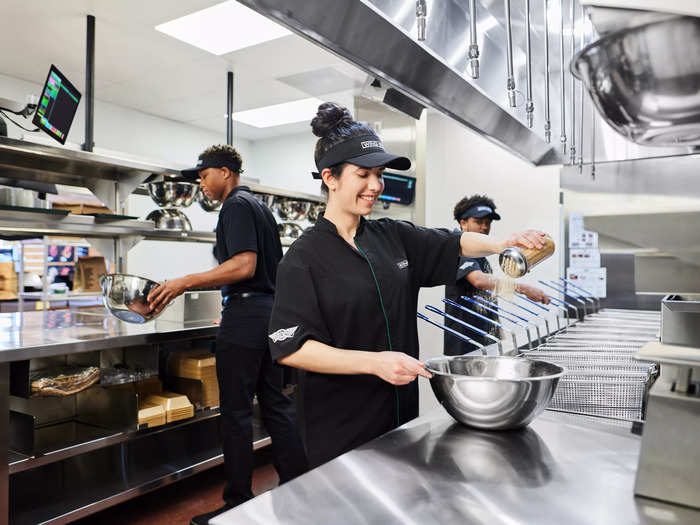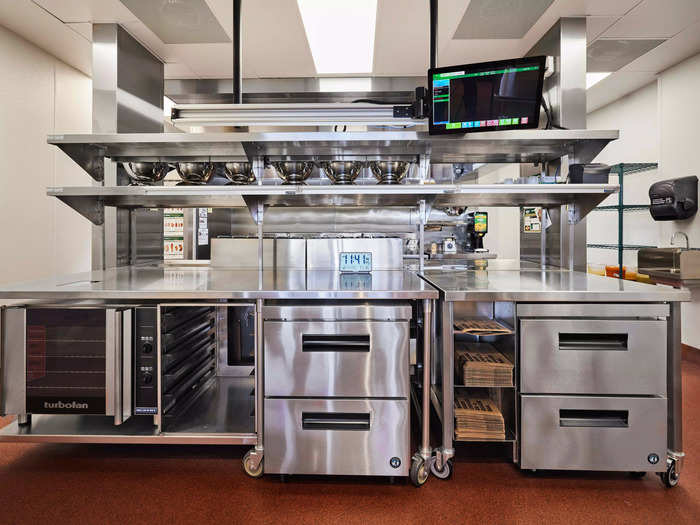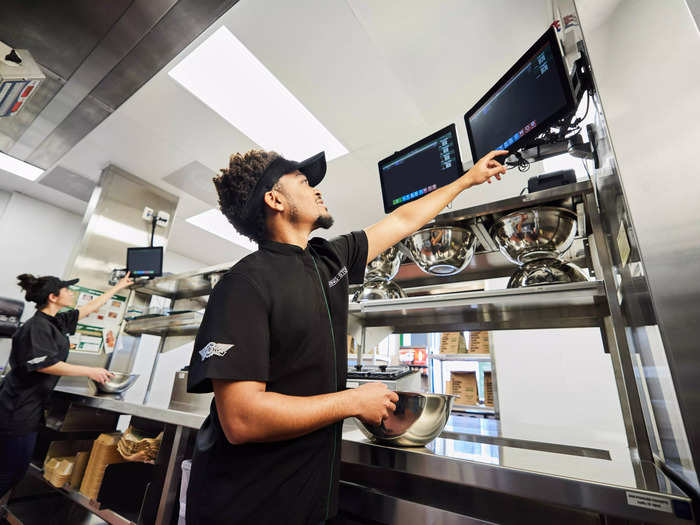Wingstop says its new prototype is the 'restaurant of the future'
The new-look restaurant. Wingstop
Wingstop has opened what it bills as "the restaurant of the future."
The new restaurant doesn't have a dining room and only sells food for delivery and collection. It is completely cashless, too.
"The pandemic really underscored delivery and carryout as a key driver of our business and that's helped us reimagine and prioritize components of future restaurants," Marisa Carona, Wingstop's chief growth officer, told Insider.
The restaurant in Dallas, where the chicken company is based, opened just under three months ago and Carona said that Wingstop was "encouraged" by initial sales results.
The restaurant has no dining area and just makes food for delivery and takeout
The new-look restaurant, which will make food just for delivery and takeout. Wingstop
The restaurant includes a lobby area for delivery drivers and customers to collect orders, and a back-to-front-of-house flow designed for fast and seamless food preparation.
It notably doesn't have dining tables.
As demand for off-premise consumption soared during the pandemic, more restaurant chains pivoted to what are known as "ghost kitchens," which generally cook food for delivery only, though some also have small lobbies for customers to collect orders in store.
Because they don't have dining rooms and often don't have lobbies either, ghost kitchens have much lower real estate requirements than full restaurants, leading to significantly lower rent. Ghost kitchens need fewer employees, too.
Wingstop says delivery and carryout now account for almost all orders. Before the pandemic, this figure was around 80%, Carona said.
You can't pay with cash
The restaurant's kitchen. Wingstop
Wingstop's new restaurant prototype isn't a ghost kitchen because you can still order on site both at the counter and by scanning a QR code on your phone.
But the new, digital-focused restaurant — which doesn't accept cash — is in line with Wingstop's goal of digitizing all transactions, it said.
The company, which operates more than 1,650 locations worldwide, boosted its digital offering in 2019 when it partnered with food ordering and delivery platform, DoorDash.
Wingstop told Insider that digital sales accounted for more than 60% of its sales. Delivery accounts for just under half of this.
"As a cashless, digitally-focused prototype, this restaurant of the future is helping us learn and innovate to better inform our growth strategies moving forward," Carona said.
The restaurant is much smaller than Wingstop's other locations
The restaurant's kitchen. Wingstop
Because of the lack of dining tables, the location measures around 1,300 square feet – nearly 400 square feet less than other Wingstop restaurants.
"We believe we can go even smaller," Carona said. "This can help when we're looking at high rent and areas with high population density but little room for a large restaurant."
Carona said that the restaurant is "totally modular," meaning everything can be moved and rearranged to test new layouts and equipment.
Digitizing orders frees up staff time
The restaurant's kitchen display system. Wingstop
Digitizing as many orders as possible frees up time for front-of-house staff to focus on other aspects of customer service.
"We've always prided ourselves on a streamlined menu and an incredibly efficient operating model, which enables us to have smaller roster sizes across all of our restaurants," Carona said. She added that the restaurant also features a kitchen display system, a first for the chain, which she said would help it operate more efficiently.
Carona said that the restaurant was inspired by a similar Wingstop prototype that opened in Cambridge, England.
"With this restaurant, we'll continue testing and learning new ways of working and operating, which we'll roll out and scale more broadly as we see fit, and we already see great potential in ghost kitchen and delivery/carryout only concepts," Carona said.

